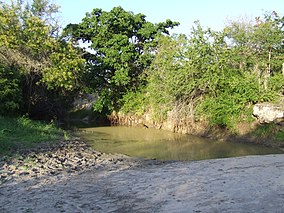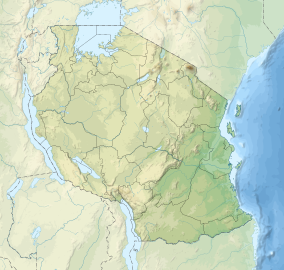Mkomazi Game Reserve
| Mkomazi National Park | |
|---|---|
|
IUCN category II (national park)
|
|
 |
|
| Coordinates | 4°17′58″S 38°23′22″E / 4.29944°S 38.38944°ECoordinates: 4°17′58″S 38°23′22″E / 4.29944°S 38.38944°E |
| Area | 3234 km2 |
| Established | 2006 |
| Visitors | 1,587 (in 2012) |
| Governing body | Tanzania National Parks Authority |
| http://tanzaniaparks.com/mkomazi.html | |
Mkomazi National Park is located in north eastern Tanzania on the Kenyan border, in Kilimanjaro Region and Tanga Region. It was established as a game reserve in 1951 and upgraded to be a national park in 2006.
The park covers over 3,200 km2 and is dominated by Acacia-Commiphora vegetation; it is contiguous with Kenya’s Tsavo West National Park. The area commonly called ‘Mkomazi’ is actually the union of two previous game reserves, the Umba Game Reserve in the east (in Lushoto District, Tanga Region) and the Mkomazi Game Reserve in the west (in Same District, Kilimanjaro Region); in government documents they are sometimes called the Mkomazi/Umba Game Reserves. Of the two, Mkomazi is larger, and has more diversity of relief and habitat, and a longer shared border with Tsavo West National Park. In the rest of this entry ‘Mkomazi’ will refer to both the Mkomazi and Umba reserves together.
Like many national parks and game reserves, Mkomazi’s history is one of contest, with the main contenders being government conservation planners and local rural resources users. It differs from many other cases in East Africa because limited resource use within the reserve was initially permitted. When Mkomazi was first established a number of pastoral families from the Parakuyo ethnic group were allowed to continue to live there with a few thousand of their cattle, goats and sheep. The (colonial) government of the time permitted them to reside there because they had been in the area for many years and were thought not to threaten the ecological integrity of the reserve. The pastoralists were only allowed in the eastern half of the reserve. Immigrant Maasai pastoralists and families from other ethnic groups were evicted when the reserve was established.
However Mkomazi was soon subject to immigration by other herders, some of which was resisted by the Parakuyo residents, and some which was facilitated by them. What with resident stock breeding and immigrant stock joining the reserve, the first decades of Mkomazi’s history were dominated by rising cattle populations. Some 20,000 animals were counted in the eastern half of the reserve in the early 1960s. In the early 1970s pastoralists began living and grazing in the western half of the reserve and by the mid-1980s around 80,000 cattle were counted inside the reserve as a whole. There were probably thousands more using it intermittently. Many of the immigrants were Maasai, who are very closely related to the Parakuyo, speaking the same language and sharing many customs. But local herders from other ethnic groups, such as the Sambaa and Pare, also grazed thousands of cattle inside Mkomazi.
...
Wikipedia

